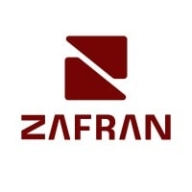


Check Point CloudGuard CNAPP and Microsoft Defender for Cloud Apps are key competitors in cloud security. Check Point has an advantage in compliance, while Microsoft stands out for integration with its ecosystem.
Features: Check Point CloudGuard CNAPP offers comprehensive compliance tools, centralized firewall management, and IAM role control, enhancing visibility and compliance across environments. Microsoft Defender for Cloud Apps provides notable threat detection capabilities, strong identity management, and user activity visibility, making it a valuable tool within the Microsoft ecosystem.
Room for Improvement: Check Point CloudGuard CNAPP needs better integration with third-party tools and enhanced documentation. It also faces challenges in policy validation and cloud provider compatibility. Microsoft Defender for Cloud Apps could improve response times and expand integration options with non-Microsoft environments. There's a demand for more streamlined reporting and non-Microsoft app protection.
Ease of Deployment and Customer Service: Check Point CloudGuard CNAPP is flexible for hybrid and multi-cloud deployments, but support responsiveness varies. Microsoft Defender for Cloud Apps offers strong integration with Microsoft products, though customers seek quicker support response times. Both solutions generally have good customer service, with Check Point needing faster problem resolution.
Pricing and ROI: Check Point CloudGuard CNAPP has a flexible asset-based pricing model, though some find costs high; its ROI comes from improved security posture. Microsoft Defender for Cloud Apps is often cost-effective as part of Microsoft E3/E5 licenses, though standalone pricing is considered high. Both provide value through security enhancements, with Check Point offering time savings and Microsoft benefiting existing users through suite inclusion.



Zafran Security integrates with existing security tools to identify and mitigate vulnerabilities effectively, proving that most critical vulnerabilities are not exploitable, optimizing threat management.
Zafran Security introduces an innovative operating model for managing security threats and vulnerabilities. By leveraging the threat exposure management platform, it pinpoints and prioritizes exploitable vulnerabilities, reducing risk through immediate remediation. This platform enhances your hybrid cloud security by normalizing vulnerability signals and integrating specific IT context data, such as CVE runtime presence and internet asset reachability, into its analysis. No longer reliant on patch windows, Zafran Security allows you to manage risks actively.
What are the key features of Zafran Security?
What benefits can users expect from Zafran Security?
In industries where security is paramount, such as finance and healthcare, Zafran Security provides invaluable protection by ensuring that only exploitable vulnerabilities are addressed. It allows entities to maintain robust security measures while allocating resources efficiently, fitting seamlessly into existing security strategies.
Check Point CloudGuard CNAPP is a cloud-native application protection platform designed to secure your cloud environments and applications. By combining CSPM, CWPP, CSNS, and WAF capabilities, it provides a comprehensive solution to protect your cloud environment from a wide range of threats.
CloudGuard CNAPP delivers end-to-end cloud security, including workload protection, vulnerability management, and identity management, all while maintaining continuous compliance. It uses advanced AI to detect and prevent threats, offering protection for containers, serverless applications, and APIs. CloudGuard CNAPP also emphasizes simplifying security management, integrating directly with cloud platforms like AWS, Azure, and GCP.
CloudGuard CNAPP provides customers with more context to drive actionable security and smarter prevention, from code-to-cloud, across the application lifecycle. More Context Means Actionable Security, Smarter Prevention. The primary components are:
What are the key features of CloudGuard CNAPP?
What are the key benefits to consider?
Check Point CloudGuard CNAPP simplifies cloud security management with integrated protection and automation.
Microsoft Defender for Cloud Apps is a comprehensive security solution that provides protection for cloud-based applications and services. It offers real-time threat detection and response, as well as advanced analytics and reporting capabilities. With Defender for Cloud Apps, organizations can ensure the security of their cloud environments and safeguard against cyber threats. Whether you're running SaaS applications, IaaS workloads, or PaaS services, Microsoft Defender for Cloud Apps can help you secure your cloud environment and protect your business from cyber threats.
Reviews from Real Users
Ram-Krish, Cloud Security & Governance at a financial services firm, says that Microsoft Defender for Cloud Apps "Integrates well and helps us in protecting sensitive information, but takes time to scan and apply the policies and cannot detect everything we need".
PeerSpot user, Senior Cloud & Security Consultant at a tech services, writes that Microsoft Defender for Cloud Apps "Great for monitoring user activity and protecting data while integrating well with other applications".
Simon Burgess,Infrastructure Engineer at SBITSC, states that Microsoft Defender for Cloud Apps is "A fluid, intelligent product for great visibility, centralized management, and increased uptime".
We monitor all Vulnerability Management reviews to prevent fraudulent reviews and keep review quality high. We do not post reviews by company employees or direct competitors. We validate each review for authenticity via cross-reference with LinkedIn, and personal follow-up with the reviewer when necessary.